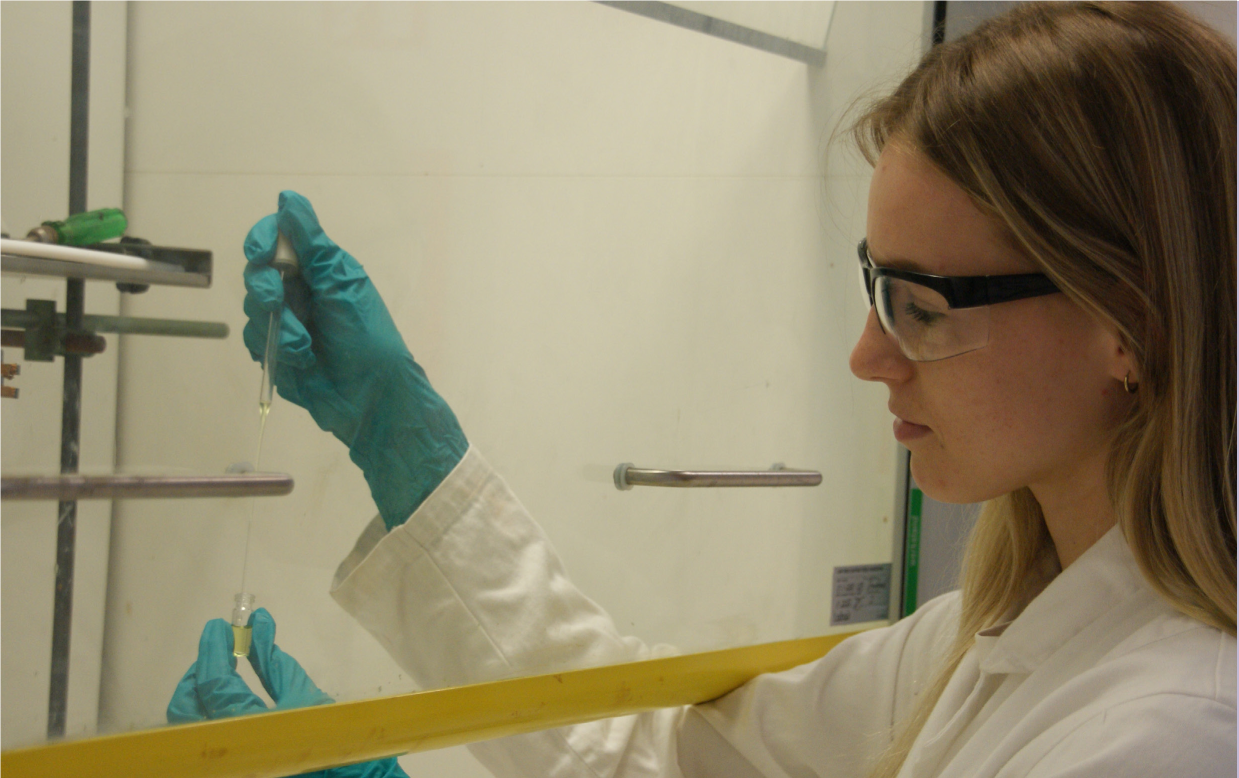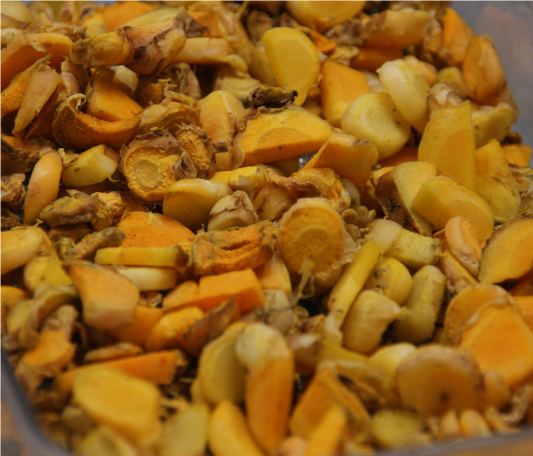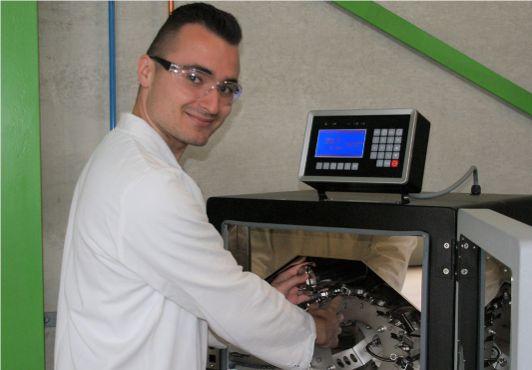
The development and application of biobased dyes is what the researchers at the Color Application Center (KLAC) are fully committed to. The KLAC is located at the Green Chemistry Campus in Bergen op Zoom. The focus is mainly on the processing of natural colors in textiles and plastics. Dyes for these applications usually have a fossil origin. In addition, the production and processing is a burden on the environment. That is why there is increasing demand and interest in natural colors. After all, color is everywhere.
COLORS FROM COFFEE GROUNDS
A great example of a recent project is the Coffee Colors to Cotton project that KLAC is implementing together with the company Caffe INC. Oil and pigments can be extracted from coffee grounds. With the obtained pigments a recipe is developed to dye cotton. The dyed cotton is then tested for color fastness, among other things.
COLORS FROM TURMERIC
The Interreg NWE project CurCol investigates the economic potential for the production chains of regionally produced plants to produce dyes for packaging. For this project, the KLAC receives specially cultivated turmeric roots from project partner PCG. The KLAC then extracts the dye curcumin from the roots. This is also the task of intern Bas Schoonen 4th year chemistry student at Avans University of Applied Sciences. Bas has always been interested in biobased, Bas Schoonen: “Renewable materials are simply the future! That’s why I find this project so interesting. I am investigating which technique we can use to extract the largest quantity and best quality of dye from the turmeric. I’m linking the research results back to PCG so they can optimize the cultivation of the root.” Ultimately, the goal is to incorporate the curcumin into biobased packaging materials.



DYES FROM SEAWEED
Another great project is Orange in the Sea. The project partner Zeefier has been working for some time on using seaweed ingredients as dyes for textiles. Research is being conducted into which dyes and pigments can be isolated from various seaweeds. Subsequently, these extracts are applied to dye textiles. Gabriëlle Vis, a 3rd year chemistry student at the Hogeschool Rotterdam, is currently working on the project. Previous students have already carried out the extraction procedure, it is now mainly a question of what the next step will be, will you filter the extract, concentrate, purify etc. Gabriëlle Vis: “Which process is used depends on which components are in the seaweed, so it is important that these components are identified.” To get a good idea of the possibilities, different types of seaweed are used. At the KLAC, materials, techniques and skills are available to develop new applications with biobased dyes. Such as dye machines, color measurements, ISO determinations etc. In addition, the KLAC can also be a partner in the research of new biobased dyes, from residual streams, plants and micro-organisms. Techniques such as extraction, purification and purity testing are available.
Questions about our projects and facilities? If so, please Eric Mattheussens.
